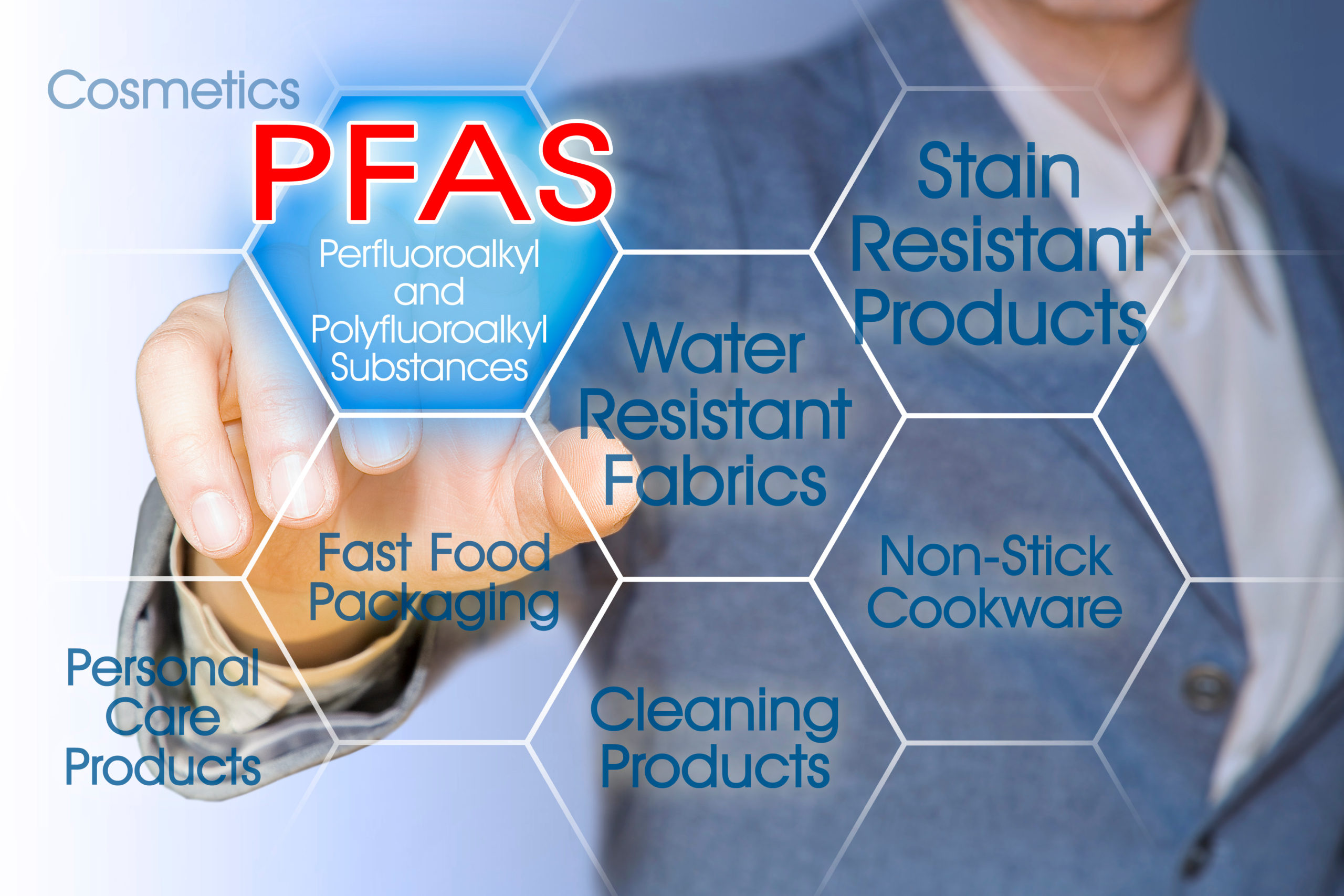The new year ushered in a slew of new regulations on “forever chemicals” in states, as well as the anticipated finalization of the proposed drinking water regulation at the Federal level.
Safe Drinking Water Act Standards for PFAS
U.S. Environmental Protection Agency (USEPA) intends to finalize new drinking water standards for Per- and Polyfluoroalkyl Substances (PFAS) in 2024. The PFAS National Primary Drinking Water Regulation (NPDWR) went to the White House Office of Management and Budget in December. If the USEPA does not modify the proposed rule based on public comments, it would regulate perfluorooctanoic acid (PFOA) and perfluorooctane sulfonate (PFOS) as individual contaminants at 4 parts per trillion. The rule would also regulate four other PFAS chemicals as a mixture, referred to as a Hazard Index.
Under the proposed regulation, water systems would use a hazard index calculation, defined in the proposed rule, to determine if the combined levels of the following PFAS pose a potential risk that triggers a violation and appropriate treatment:
- Perfluorononanoic acid (PFNA)
- Perfluorohexane sulfonic acid (PFHxS)
- Perfluorobutane sulfonic acid (PFBS)
- Hexafluoropropylene oxide dimer acid (HFPO-D), commonly known as GenX chemicals
The proposed USEPA regulation will require public water systems to monitor for PFAS chemicals at each entry point. It will also require systems to notify the public and provide treatment for those systems which exceed the MCL(s).
PFAS Under CERCLA
USEPA has proposed to list PFOA and PFOS as hazardous substances under the Comprehensive Environmental Response, Compensation, and Liability Act (CERCLA), the nation’s Superfund law. The final rule is anticipated in early 2024. If finalized, the inclusion of PFOA and PFOS as hazardous substances would give USEPA the power to improve transparency around PFAS releases, help ensure that polluters pay for treatment and cleanup, and help communities that are facing significant pollution quickly receive effective protections.
Minnesota Department of Health Lowers Health Based Values for PFOA & PFOS
In mid-January, the Minnesota Department of Health (MDH) lowered the State’s health-based values (HBV) for PFOA and PFOS. HBV reflect the level of a contaminant that can be present in water and protect the most vulnerable populations for up to a lifetime of exposure. HBV are not regulatory levels and are for risk guidance only. They do not consider cost or the availability of treatment technologies for water systems to meet the set values.
MDH has developed HBV and the associated Health Risk Levels (HRL) to protect groundwater resources in the State. HBV must go through the rule making process set up by the Minnesota State Legislature which includes peer review and at least one public comment period to become an HRL. MDH considers chronic exposure duration to be greater than 10% of a lifetime and cancer exposure duration to be zero to 70 years of age.
New MDH health-based values in parts per trillion:
PFOA
- Chronic: 0.24 ng/L or ppt
- Cancer: 0.0079 ng/L or ppt
PFOS
- Chronic: 2.3 ng/L or ppt
- Cancer: 7.6 ng/L or ppt
“Minnesota has historically been a leader in PFAS regulations and has aggressively studied the chemicals’ impact on the health and wellbeing of the State. Given that Minnesota is the home of 3M, there is a strong expertise and history with these chemicals, and it is not surprising Minnesota has developed an aggressive approach to mitigating exposure to the contaminants,” says Aaron Vollmer, AE2S Client Program Leader. “The ability for impacted communities to manage the potential economic cost of treating these contaminants will be a significant challenge and most likely require funding support from the State and local government.”
Minnesota and Colorado Adopt Regulations
In addition, on January 1 Minnesota’s and Colorado’s bans on intentionally added PFAS in food packaging went into effect. The Minnesota ban not only includes the packaging that comes in direct contact with food, but also the blocking, bracing, cushioning, weatherproofing, tape, shrink wrap, and strapping used to protect the food stuff during shipping.
Colorado’s ban goes beyond Minnesota’s by including intentionally added PFAS in carpets, rugs, fabric treatments, juvenile products, and certain oil and gas products. Colorado also requires cookware manufacturers to identify PFAS on the product label and maintain a website that provides PFAS information. Minnesota’s stricter PFAS ban on intentionally added PFAS will go into effect on January 1, 2025. Minnesota identifies many of the same products as Colorado. However, Minnesota’s ban includes cosmetics, dental floss, cleaning products, menstruation products, upholstered furniture, and ski wax.

